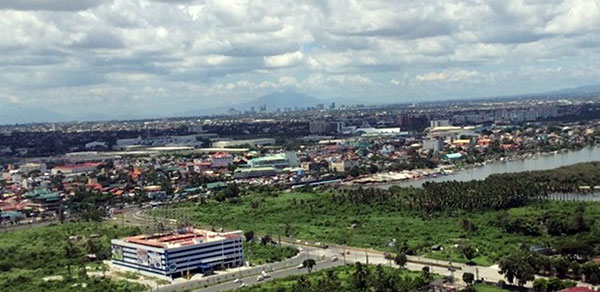US ambassador simply stated facts
US Ambassador Philip Goldberg’s remarks during the Philippine Constitution Association (Philconsa) gathering at Manila Golf last Thursday obviously struck a raw nerve with China, whose new “10-dash line” map has earned for it another flurry of criticism from the international community.
Clarifying that the Enhanced Defense Cooperation Agreement (EDCA) between the Philippines and the US was not aimed against China, Amb. Goldberg stressed that the United States takes a “strong position” with regard to behavior and coercion or intimidation or use of force, stressing that maritime disputes should be settled legally and diplomatically like what the Philippines is doing by elevating its position before the United Nations.
Saying he cannot offer a full analysis yet regarding the new 10-dash line map released by China ((eating into the territory of the Philippines and other countries like India with Arunachal Pradesh), Ambassador Goldberg nevertheless said the new map has no basis in international law. The US believes in agreements reached through the United Nations Convention on the Law of the Sea – not through intimidation, and that artificial creations (like the islands that China is building in several disputed areas in the Spratlys) are not covered by the UNCLOS, he said.
China spokespersons are irked at the US envoy’s observations, saying countries should not read too much about the release of the new maps. If that’s the case, why publish a new map at all with that additional line that will only serve to confuse the Chinese and agitate the international community? But then again, China’s mapmakers seem to make periodic changes arbitrarily. For instance, China released a map in 1947 that featured an 11-dotted line. But in 1950, the new maps removed two lines after reaching an agreement with Vietnam, hence the U-shaped line composed of nine dots that China has been publishing before coming out with the 10-dash map, said one source.
According to a Wall Street Journal piece by Andrew Browne published last April, the line started not with nine but 11, but “two were scrubbed out in 1953 after the victorious communists adopted the (nine-dash) line,” which he described as lacking scale and precision and without any geographical coordinates. The lines looked like they were simply added with a thick black marker, the WSJ piece noted. Obviously, the US Ambassador is right – these changing “dashes” cannot be used for territorial claims because they are not based on international law. Given the inconsistencies, we won’t be surprised if China will come out with a new map tomorrow featuring a “12-dash line” encompassing all the disputed territories in the whole South China Sea.
Honda’s ‘Civic in the sky’

Japanese carmaker Honda is literally moving up with the first business jet off the production line, conducting its initial flight last Friday. Dubbed as the “Civic in the sky,” the $4.5 million Honda jet soared over the Honda Aircraft global headquarters in Greensboro, North Carolina for 84 minutes.
Honda first announced plans to go into commercial production of business jets in 2006, but the program was marked by delays such as engine glitches that set back schedules. Said to be the world’s most advanced light jet, Honda’s fifth FAA conforming aircraft features a proprietary Garmin G3000 next generation all-glass avionics system with dual touch screen controllers, with more cabin space that can be used as a workspace with completely adjustable executive seating and a fully private lavatory and other modern amenities. According to the manufacturer, the Honda Jet’s over-the-wing engine mount (OTWEM) configuration combined with other innovations make it the fastest, most spacious and most fuel-efficient jet in its class.
The 5-seater jet, which will be manufactured entirely in the US and offered for sale in North America and Europe, will begin delivery in 2015 with an initial order of 100 from businesses and affluent private individuals.
What a difference a ‘clear day’ makes

Despite our familiarity with typhoons and storms and such terms as low pressure area thanks to weather forecasters who are appearing more often on television, not many know that high pressure systems create clear skies, and this happens when cooler air contracts, making air molecules much smaller. Low pressure systems on the other hand are brought by warm air that expands, resulting in fewer air molecules in the atmosphere that usually bring cloudy days and rainy days.
Many of us who are used to seeing dark polluted skies especially in the past few weeks were pleasantly surprised to see a clear day, removing the gloomy atmosphere that can dampen the optimism of people. The rains have succeeded in removing all that dust and pollution hanging over Metro Manila, which is why the skies looked clean and clear as evidenced by the photo taken from the cockpit of an Airbus last Saturday. Certainly, there’s a lot of difference that a clear day makes – it greatly affects moods and disposition, making people feel more pleasant and genial.
***
Email: [email protected]
- Latest
- Trending





























